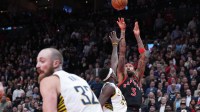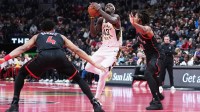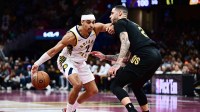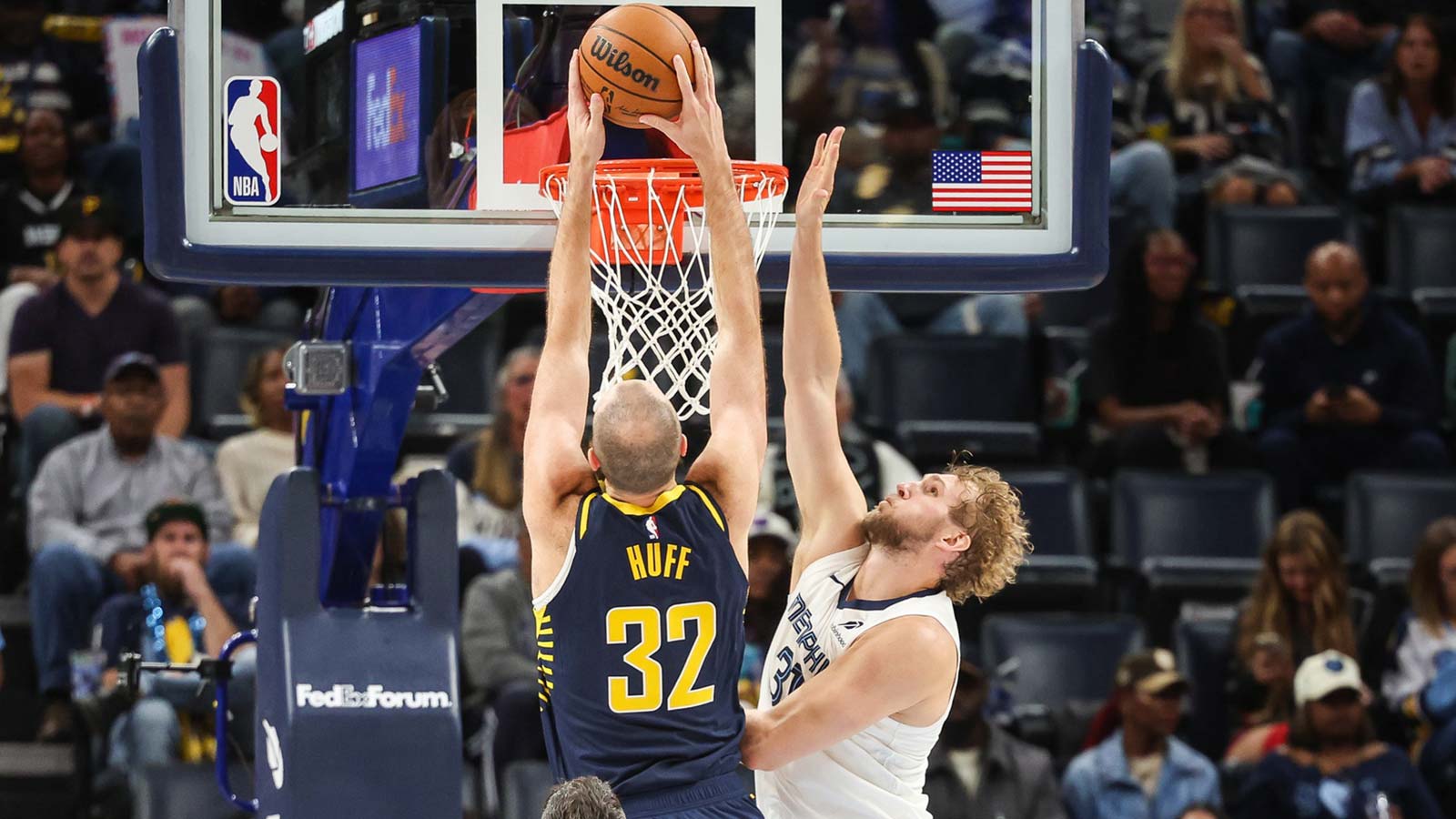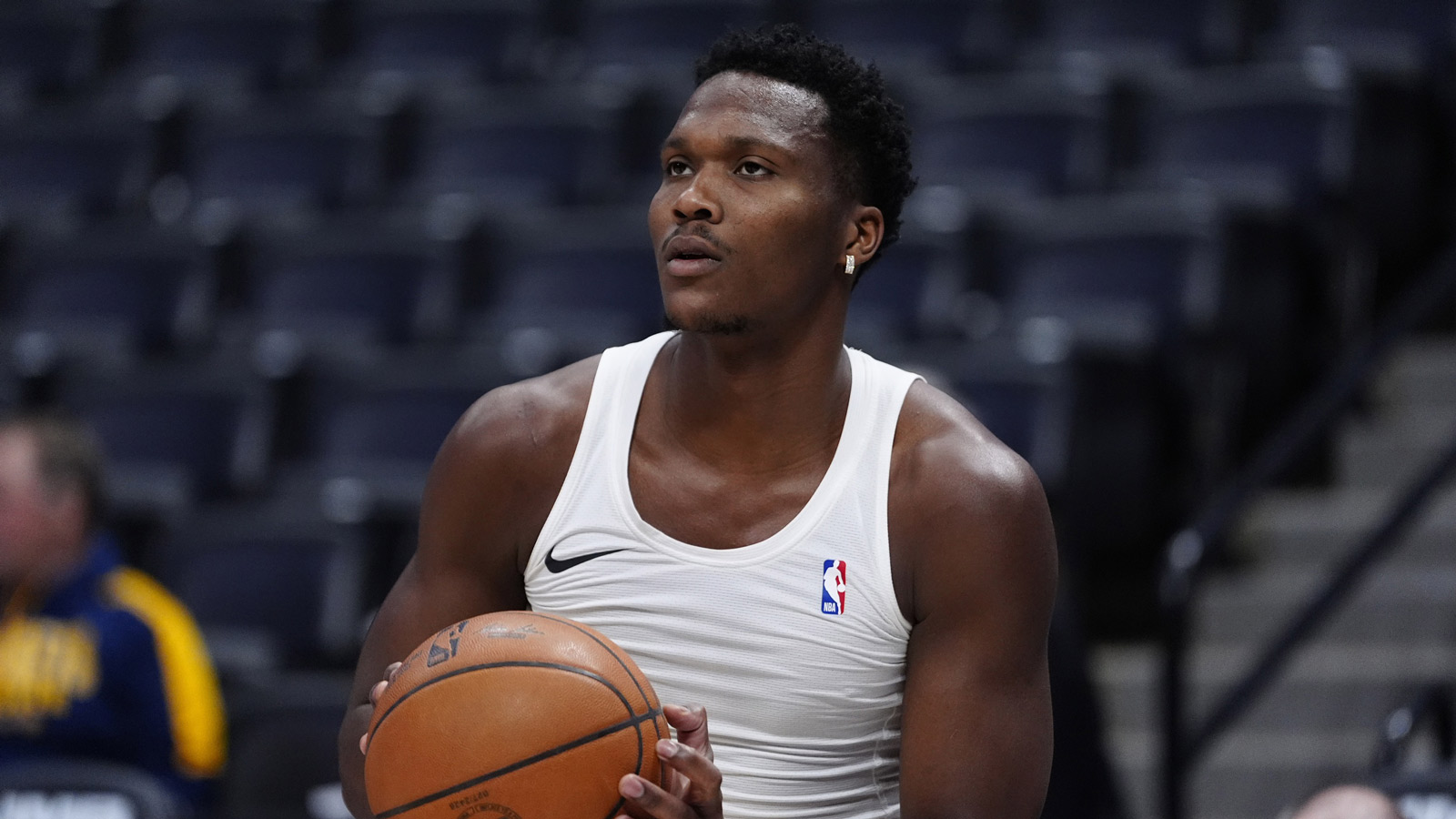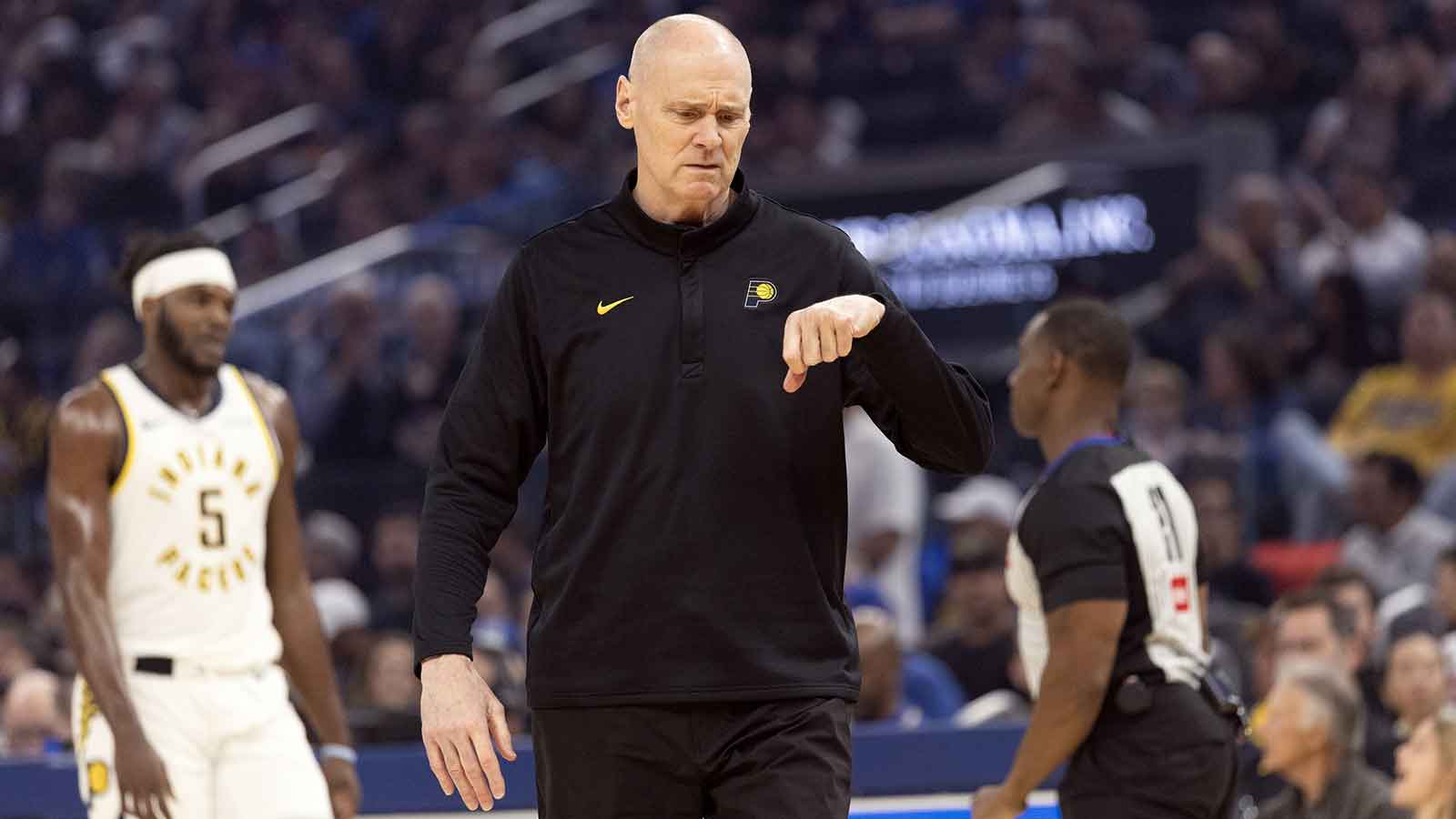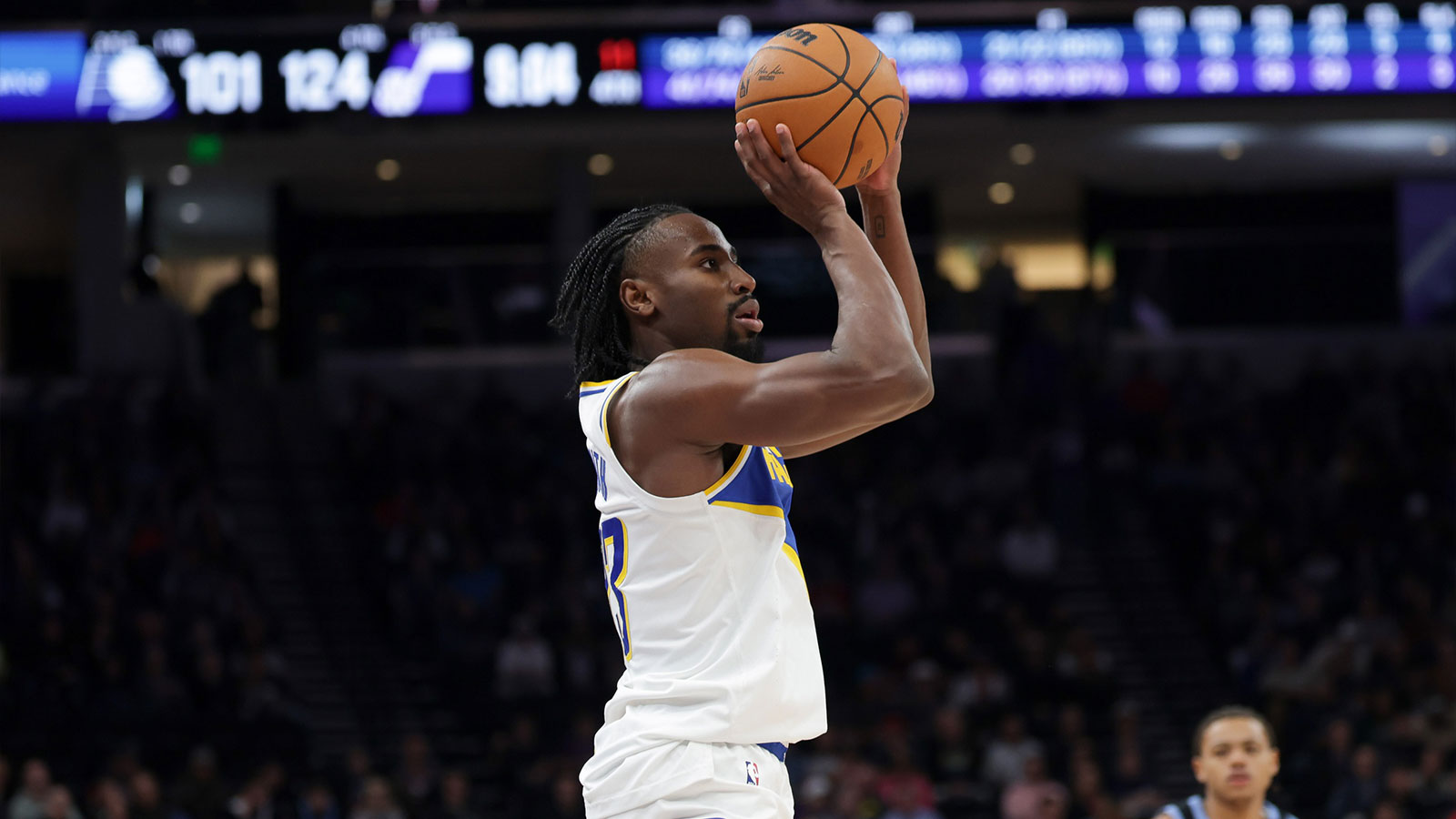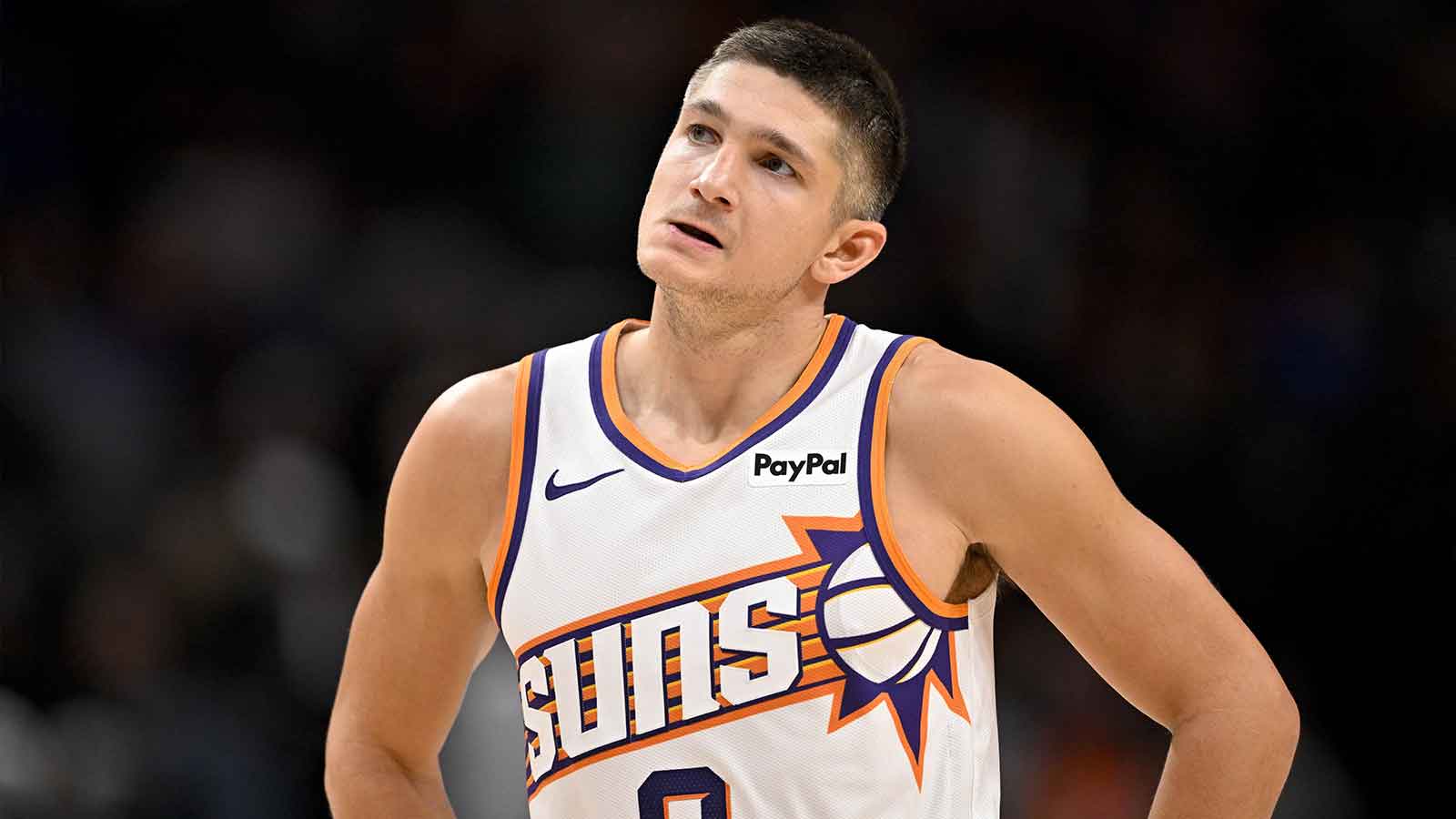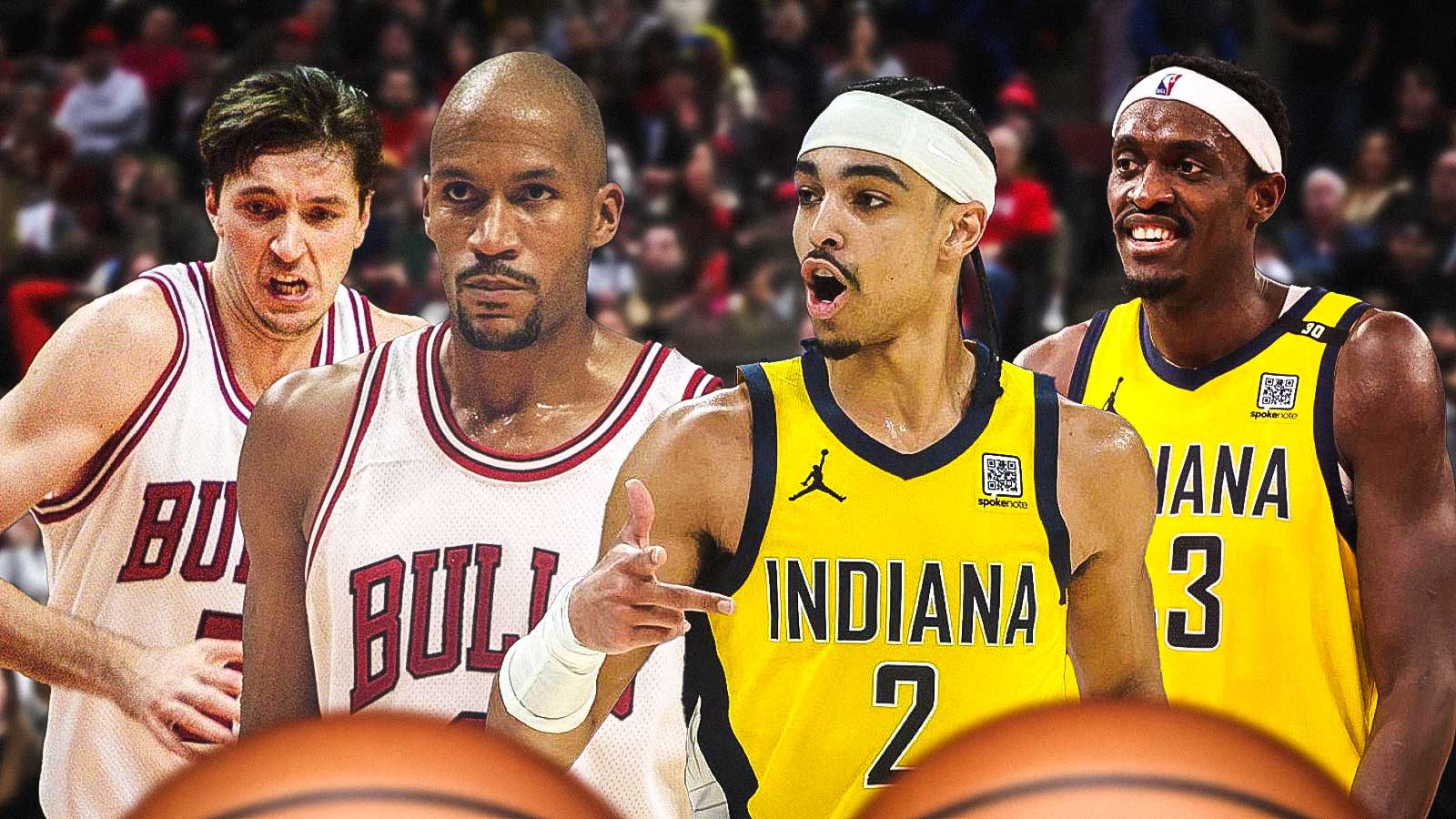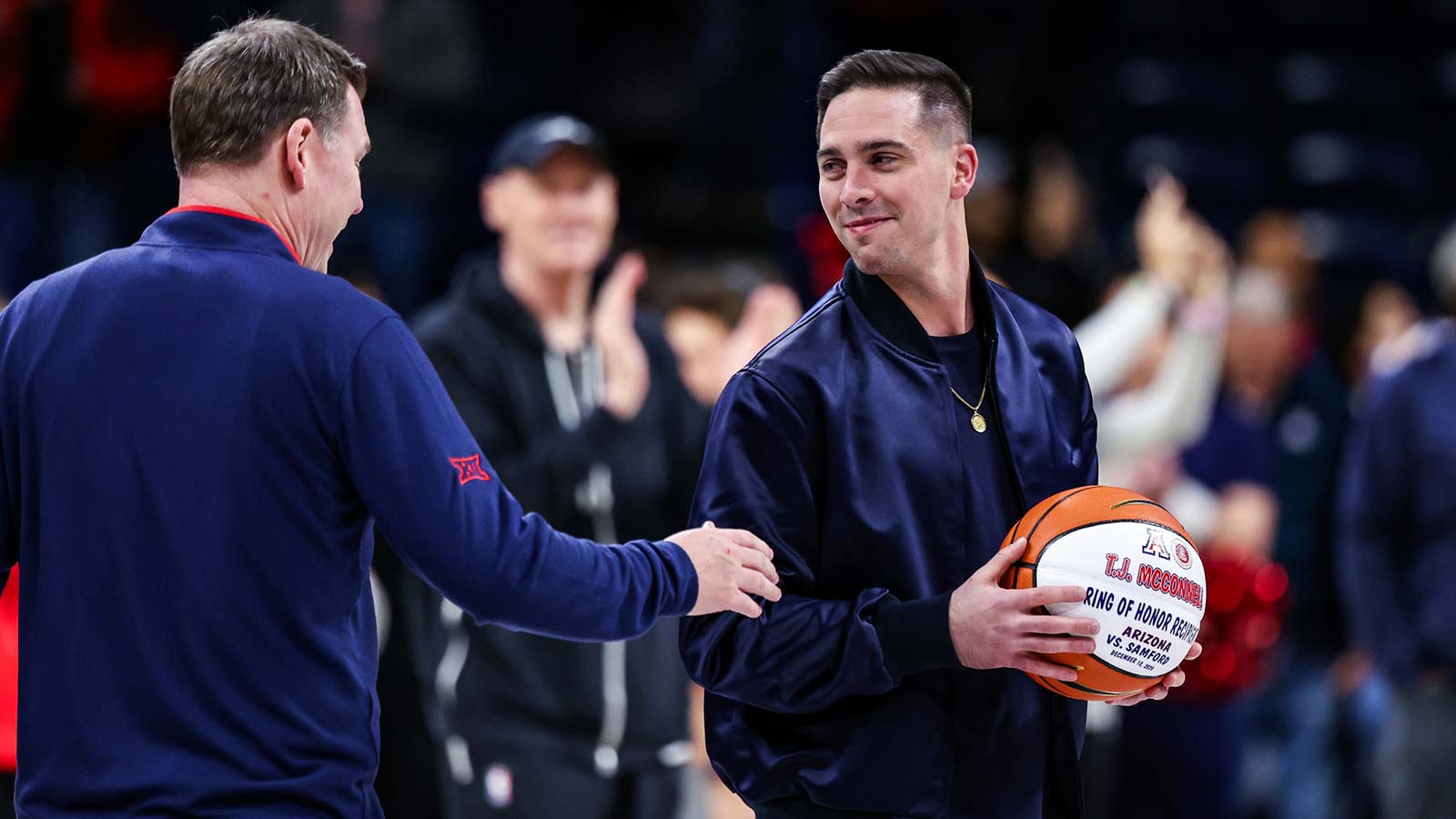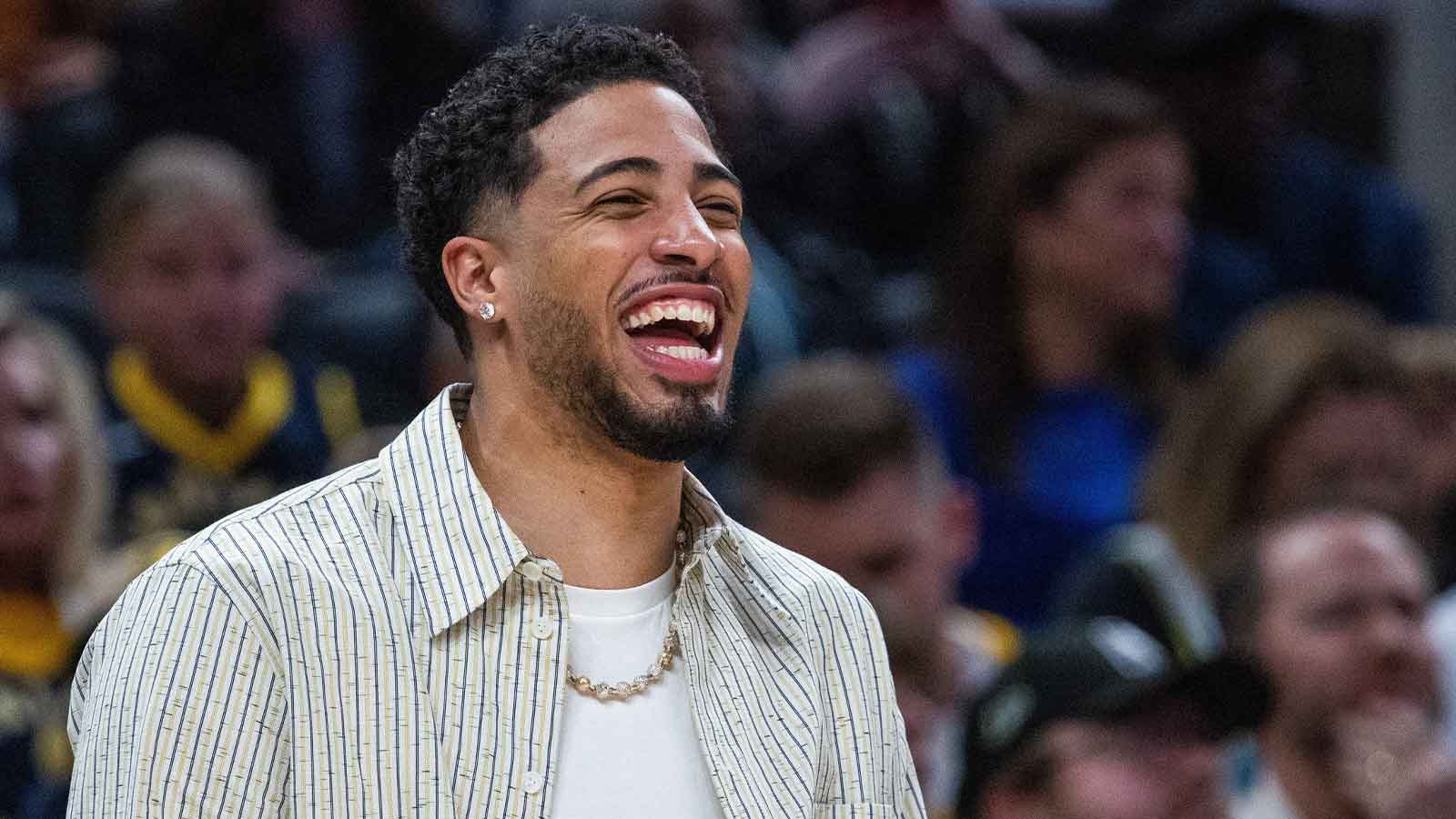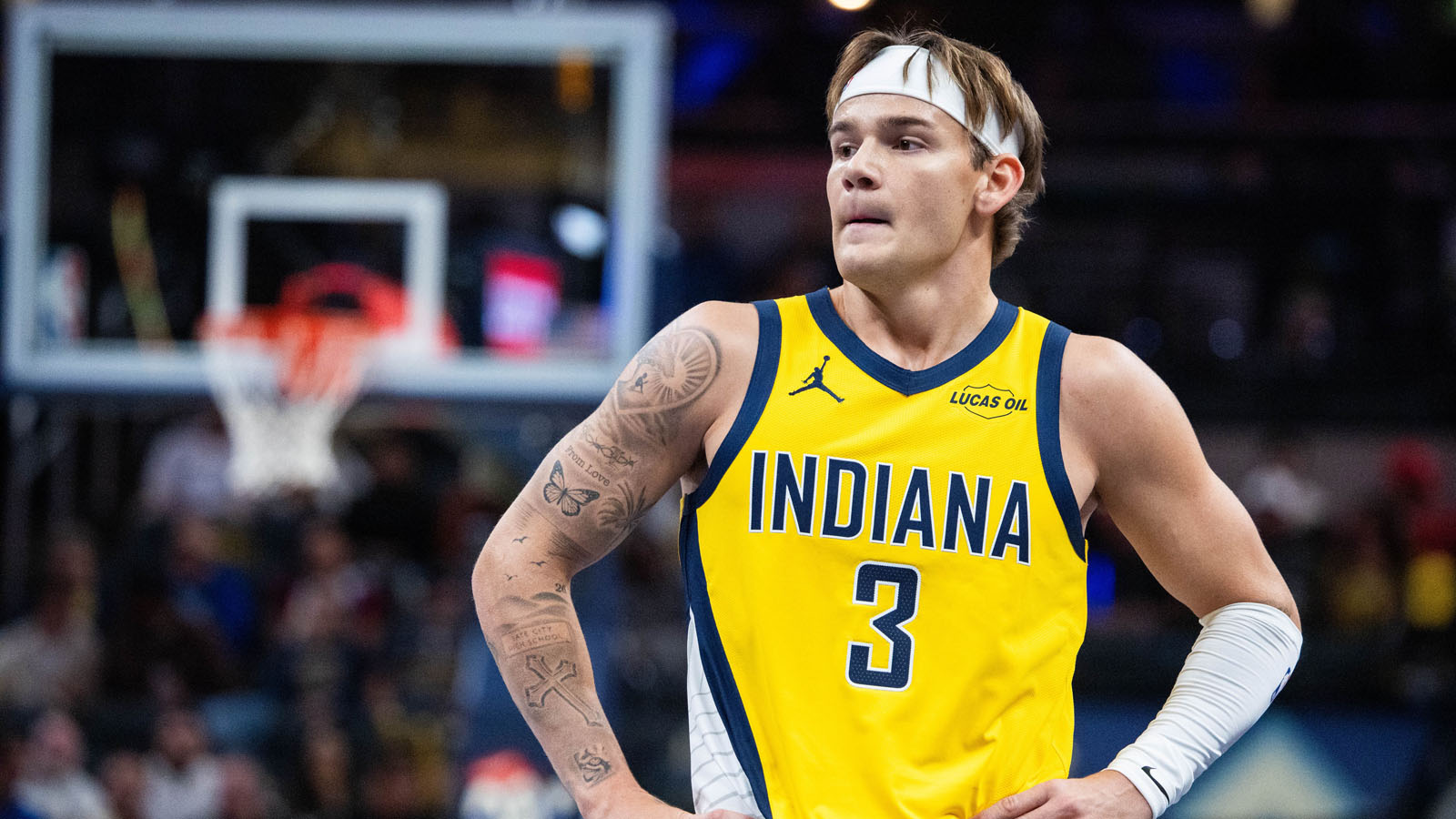INDIANAPOLIS — The Indiana Pacers, high off their Game 1 win thanks to a last-second shot by Tyrese Haliburton, saw the Oklahoma City Thunder and their bench set the tone during Game 2. With this series evened at 1-1 entering Wednesday night, the Pacers understood the importance of increasing their aggressiveness and finding ways to get others more involved outside of Haliburton and Pascal Siakam.
As was the case with Oklahoma City the game before, the Pacers' bench answered the call, supplying this team with the energy and mental fortitude needed to give Indiana fans something they haven't had since 2000: a Finals victory on their home floor.
This series, one that many believed would be lopsided in favor of the Thunder, has quickly pivoted with the Pacers staking claim to a 116-107 Game 3 win at Gainbridge Fieldhouse on Wednesday night. Haliburton was fantastic, coming up one rebound shy of a triple-double, but TJ McConnell and Obi Toppin helped increase Indiana's effort on defense.
And then there was Bennedict Mathurin, the hero off the bench in Game 3.
Mathurin has been in and out of Carlisle's rotations throughout the playoffs, yet the 22-year-old wing hasn't let that impact his mindset. He received more minutes and opportunities in Game 2's loss, and he built off this performance with a 27-point outburst, leading all players in scoring in what was one of the more improbable bench-scoring efforts in NBA Finals history.
“Just staying ready. Just whenever my number is called, go into the game and do the right things and try to help my team win,” Mathurin said in his postgame comments regarding his ever-shifting role. “That's the whole mindset.”
The Thunder are an elite defensive team. Historically speaking, they are one of the greatest in NBA history. What made Indiana's approach on offense so different in Game 3 compared to the first two games of this series was Haliburton being more aggressive looking for his own shot while also making sure the ball was popping to others early and often to eliminate stagnation and catch OKC off guard.
Even though the All-Star guard is the Pacers' offensive engine, finding ways to get others involved, specifically Mathurin and McConnell, allowed Carlisle's team to get back to what they do best.
That would be stepping up in big moments and creating energy throughout the game.
“Those guys were tremendous. TJ just brought a will, competitive will, to the game. Mathurin jumped in there and immediately was aggressive and got the ball in the basket,” the Pacers head coach said. “This is the kind of team that we are. We need everybody to be ready. It's not always going to be exactly the same guys that are stepping up with scoring and stuff like that. But this is how we got to do it, and we got to do it as a team.
“We've got to make it as hard as possible on them.”
Pacers offense didn't evolve… it went back to its roots
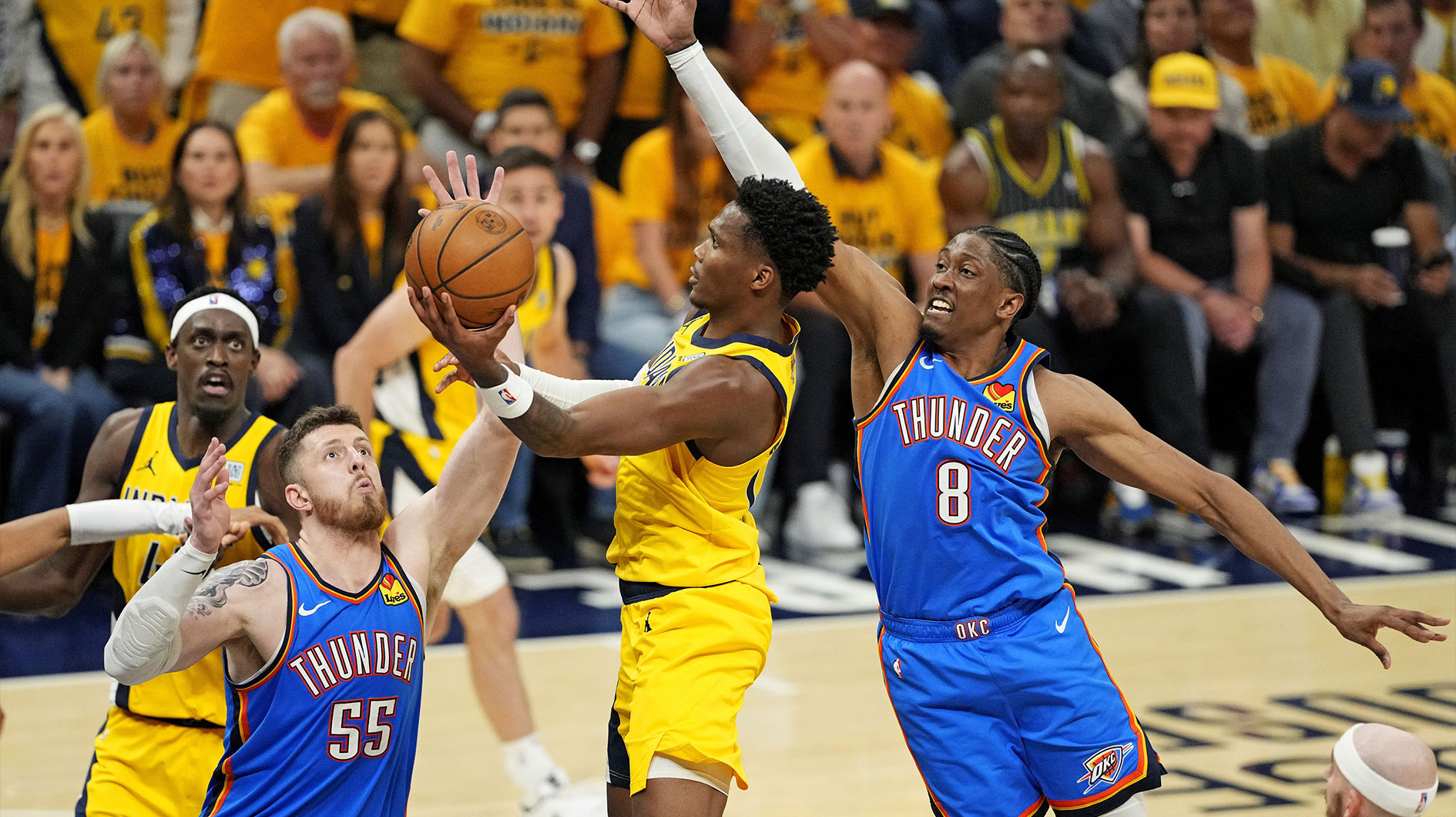
Over the course of the 2024-25 NBA season, the Pacers were always ranked as one of the more efficient offenses in the league. Although Haliburton and Siakam are the featured stars, this team prides themselves on their depth.
Indiana ranked top-10 in the league during the regular season in bench scoring and had seven players averaging at least 10 points per game. McConnell was close to joining this group, as he averaged 9.1 points per game in 79 games, 78 of which he came off the bench.
When it comes to passing, the Pacers were able to win 50 games for the first time since the 2013-14 season because of their ability to move the ball and find open spots on offense without the ball in their hands. Whereas the Thunder play a lot of one-on-one with Shai Gilgeous-Alexander and Jalen Williams at the top of the key, the Pacers are at their best when the offense is free-flowing.
In the first two games of this series, Indiana was taken out of its comfort zone. They were operating late in the shot clock, and a lot of responsibility fell on Haliburton to try and constantly bail his team out. Haliburton wasn't nearly as effective as usual (another clutch shot notwithstanding), racking up only 12 assists total over the first two games compared to eight turnovers.
That is why Game 3 was different.
Despite Haliburton once again leading the Pacers with 11 assists in the Game 3 win, he was oftentimes on the receiving end of multiple passes before dishing it out. Ultimately, those led to open shots that Indiana knocked down.
Siakam was facilitating through the low block, Mathurin was taking charge of the offense as an aggressive scorer at times, and Toppin was no longer just an outside threat — his shooting admittedly being a big part of the Game 1 comeback.
Instead, Toppin, Mathurin, and others were constantly cutting and looking for back-door scoring opportunities that the Thunder weren't ready to defend. This fast pace and constant ball movement was confusing for Oklahoma City to defend, and it allowed Indiana to seize control of Game 3 throughout the second half on Wednesday night.
So what exactly changed coming off their loss in Game 2? The Pacers and Mathurin became the hunters on the court, dictating every offensive set instead of letting the Thunder's defense initiate the pace and style of play.
“I think (it was) aggressiveness. I think the way we started the game wasn't the best, but we were able to call a timeout and pretty much execute what we usually do,” Mathurin told ClutchPoints. “I think, when we play Pacers basketball, that's the best thing that we are going to get and the fans are going to get.”
The Pacers were without Mathurin during last season's playoff run, which ultimately ended in the Eastern Conference Finals. While he has been inconsistent at times throughout the regular season and into the playoffs, Mathurin's athletic abilities on the wing allow Indiana to have a different look and feel offensively.
Unlike Aaron Nesmith, Toppin, and others who tend to rely on Haliburton or Siakam creating opportunities on offense for them, Mathurin always plays with a high motor. He can get downhill toward the rim, and the young wing has all the confidence in the world in his shot.
That intensity and aggressiveness seen from Mathurin in the Pacers' Game 3 win is everything they need to pull off the upset in this series.
“I thought he did just a great job of playing within what we do so well. He did a great job of coming off handoffs, reading the pocket, rising up from the mid-range,” Haliburton said of Mathurin's performance. “This is a defense that will give that up. Analytically, that's not the best shot. But I thought he did a great job of hunting that and getting downhill.
“What Ben does at such a high level is getting to the free throw line, and in this series, we need to get to free throws. We need to get to the paint. I thought he did a great job of that. He just made big play after big play.
“That's the great thing about the Finals, great thing about basketball is when you have a team with this much depth, it be can anybody's night.”
Along with Mathurin's 27-point performance off the bench, the best scoring night of any bench player in NBA Finals history since Jason Terry's 27-point outing in Game 6 of the 2011 NBA Finals, Siakam stepped up in a huge way for the Pacers offensively.
Aside from scoring 21 points on 8-of-14 shooting, his most efficient game of the series against the Thunder, Siakam was heavily involved in the offense finding success in Game 3. As others cut off the ball and found open spots on the floor, the former NBA champion was operating in the low post, moving the ball around and creating space for those off-ball cuts to flourish.
His play was critical to Indiana claiming its second win over Oklahoma City. However, to Siakam, this was just another game with no significant changes to his team's offensive identity.
“I just thought we played our game,” Siakam told ClutchPoints. “Against a team like that, you got to continue to play and can't get stuck. We know how good they are defensively. I think as much movement as we can have, the better.”
The challenge ahead is now finding a way to reset their mindset and prepare for a critical Game 4 in Indianapolis on Friday night. Historically, the team that wins Game 3 of the NBA Finals goes on to win the series roughly 80 percent of the time.
Those odds are certainly in the Pacers' favor, but a loss at home in Game 4 to the Thunder would once again flip the script of this series. All momentum is on Indiana's side. The dream scenario would be returning to Oklahoma City with a 3-1 lead, which is why the message in Indiana is to maintain passion and accept the challenge presented to them.
“That's the challenge before us right now, is to maintain,” Carlisle said. “It's got to be a killer edge to beat these guys. We're going to be an underdog in every game in this series.
“It's a daunting challenge.”



